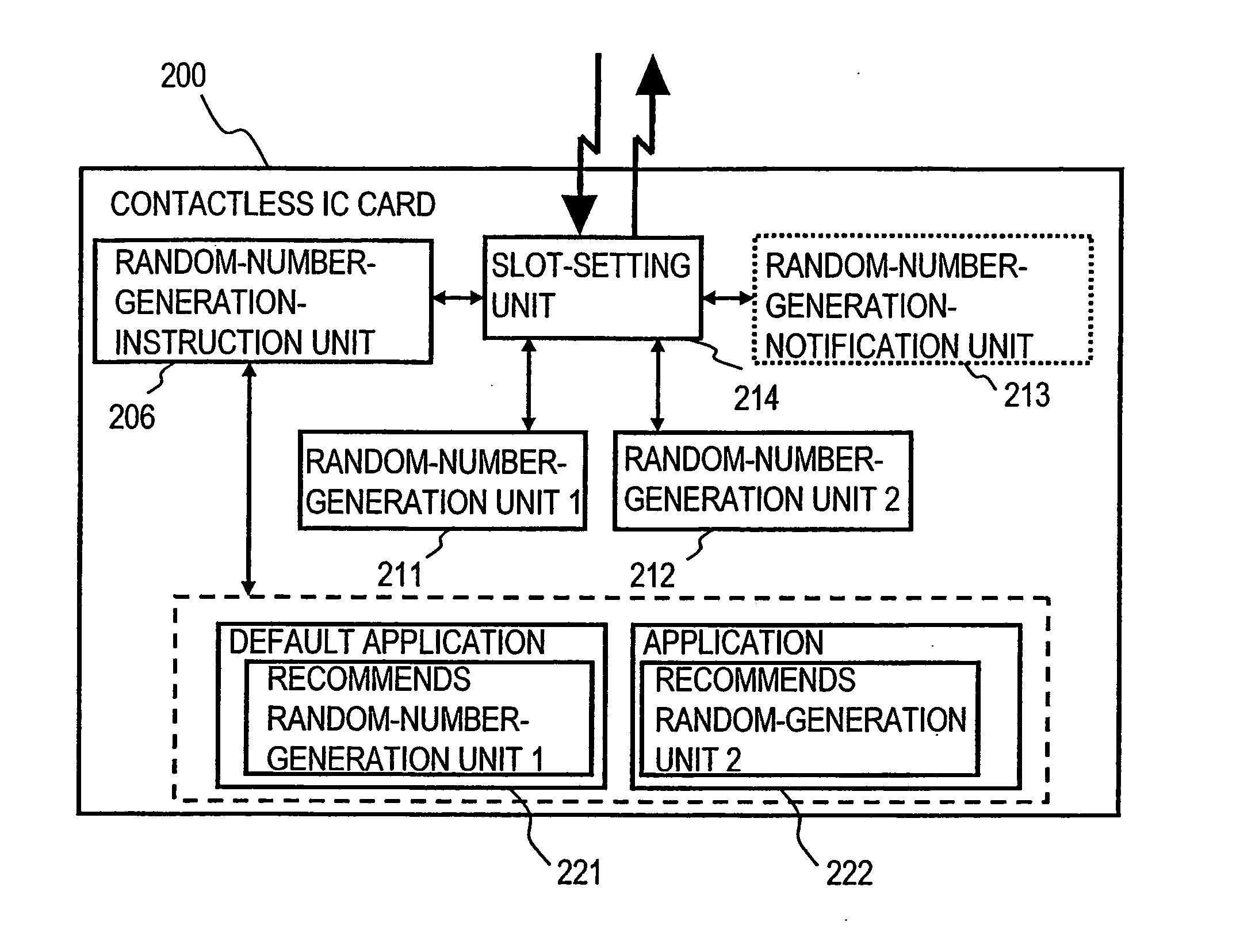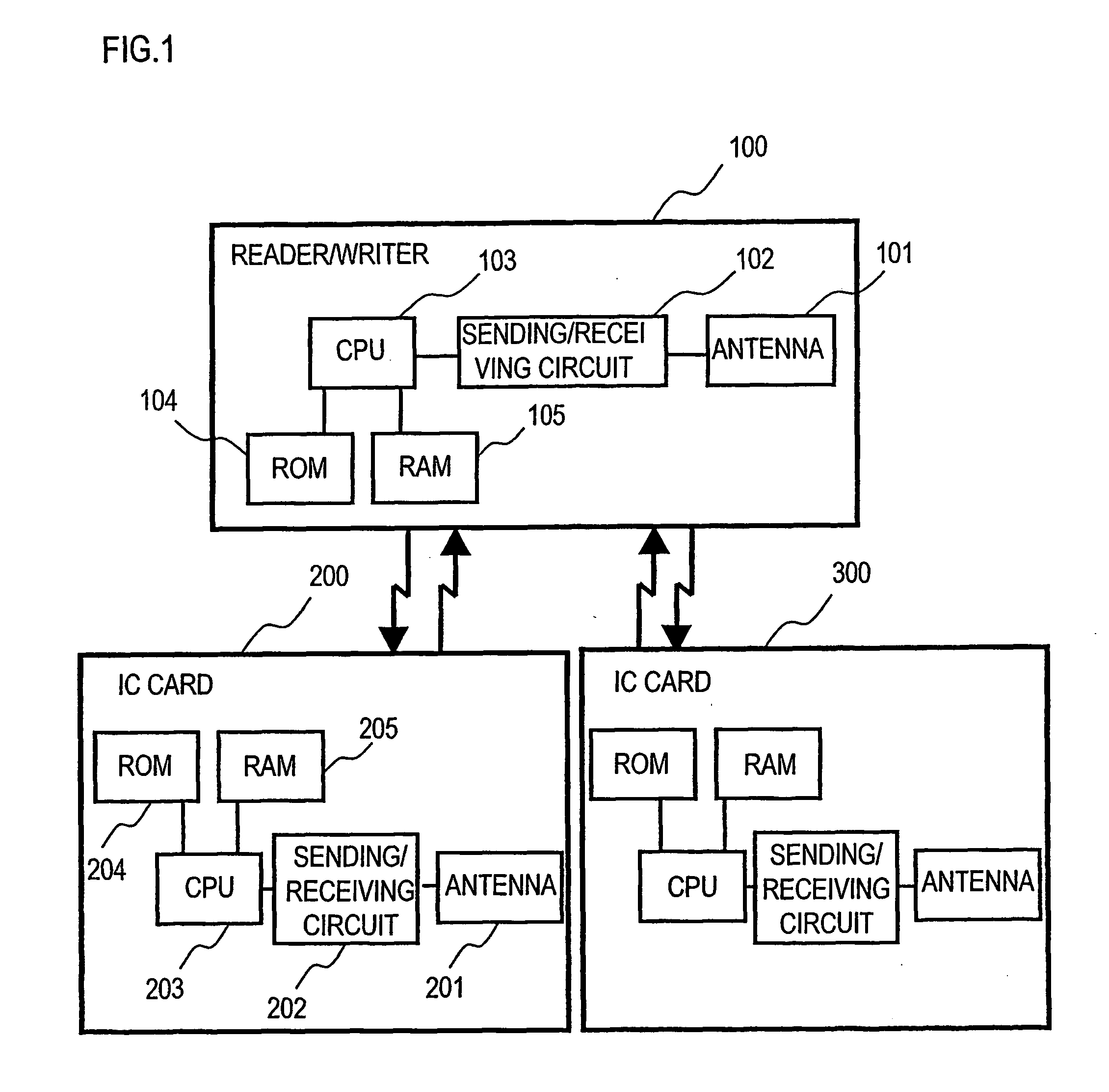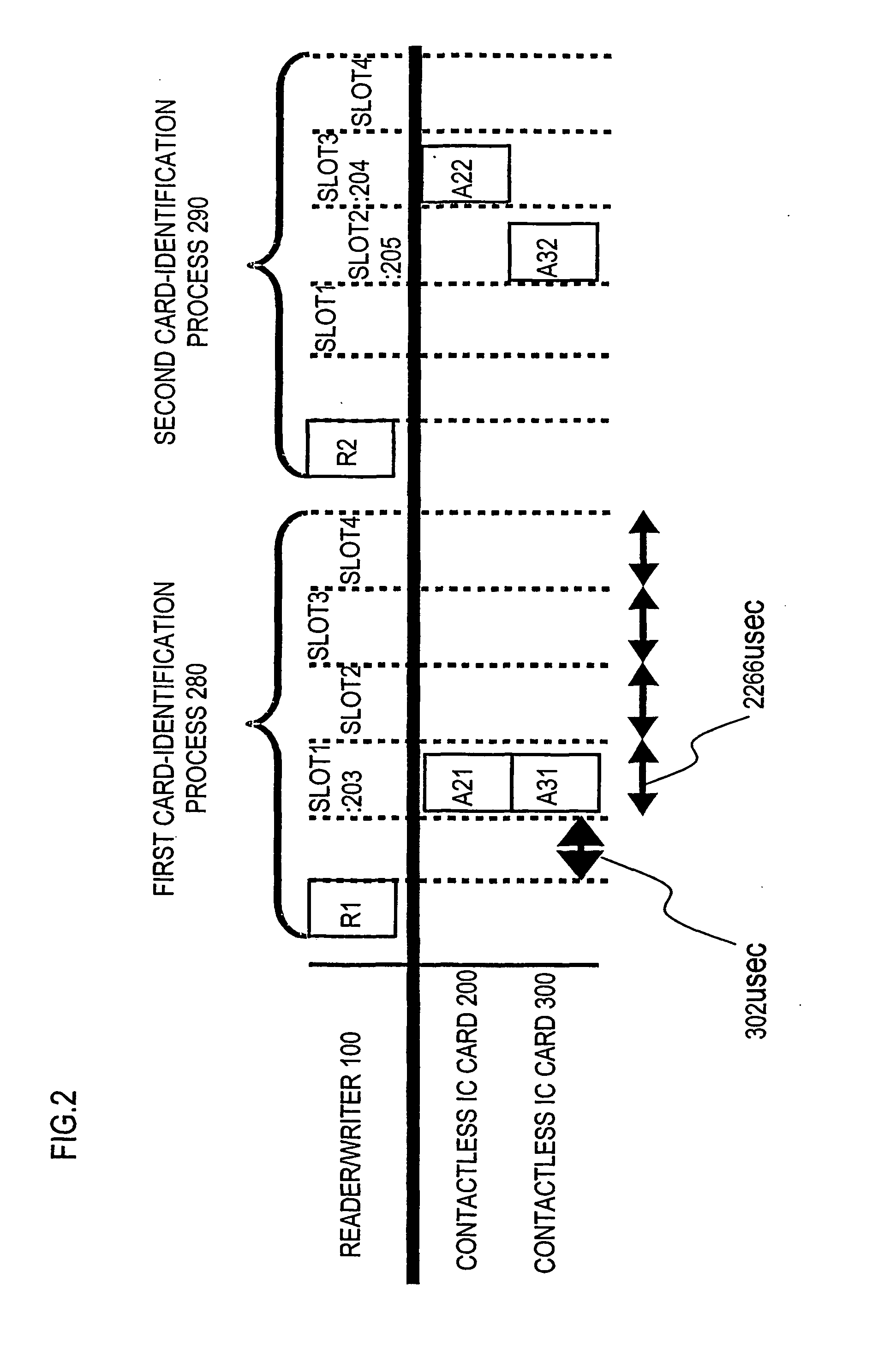Contactless ic card
a contactless, ic card technology, applied in the field of contactless ic cards, can solve the problems of collision in the first request, delay in identifying the ic card by the reader/writer, collision of initial responses, etc., to prevent collisions between responses, and reduce the possibility of collisions between responses
- Summary
- Abstract
- Description
- Claims
- Application Information
AI Technical Summary
Benefits of technology
Problems solved by technology
Method used
Image
Examples
first embodiment
(First Embodiment)
[0054] As shown in FIG. 5, the contactless IC card of a first embodiment of the invention comprises: random-number-generation unit 1 (211) and random-number-generation unit 2 (212) for generating random numbers; a random-number-generation-instruction unit 206 that contains data for designating which of these random-number-generation units 1 (211), 2 (212) to use; and a slot-setting unit 214 that uses the random number generated by the random-number-generation unit designated by the random-number-generation-instruction unit 206 to respond to the reader / writer. The random number referred to here is a random number that is used to set the slot for responding to a request when an initial-response request is sent from the reader / writer. The random-number-generation units mentioned above are located independently from the application stored on the contactless IC card. Independent means that the hardware, or software different from the application. Also, random-number-gen...
second embodiment
(Second Embodiment)
[0090]FIG. 8 is a block diagram of the functions of the contactless IC card 250 of a second embodiment of the invention. The reader / writer 100 is the same as the reader / writer described in the first embodiment so an explanation of it will be omitted here.
[0091] The contactless IC card 250 is constructed such that it has a random-number-generation-data-acquisition unit 207 in addition to the construction of the contactless IC card 200. The random-number-generation-data-acquisition unit 207 acquires random-number-generation data from the reader / writer and notifies the slot-setting unit of the contents of that data. The slot-setting unit requests the random-number-generation units 1, 2 or applications 701, 702, 705 on the contactless IC card 250 to generate a random number based on that notification, and this will be explained in more detail later.
[0092]FIG. 9 is a flowchart showing the operation of the contactless IC card 250.
[0093] First, the contactless IC card...
third embodiment
(Third Embodiment)
[0103]FIG. 10A is a block diagram showing the function of the contactless IC card 260 of a third embodiment of the invention, and FIG. 10B is a drawing showing an example of the switch unit. The reader / writer 100 is the same as the reader / writer described in the first embodiment so an explanation of it will be omitted here.
[0104] The contactless IC card 260 is constructed such that it has a switch-reading unit 208 in addition to the construction of the contactless IC card 200. The switch-reading unit 208 changes the signal sent to the CPU 203 between the switch OFF state and switch ON state. Depending on the signal that is sent, the CPU 203 selects either random-number-generation unit 1 or random-number-generation unit 2. Here, when the switch is OFF, the signal sent to the CPU 203 is plus voltage, and in that case, random-number-generation unit 1 (211) is selected, and when the switch is ON, the signal sent to the CPU 203 is zero voltage, and in that case, random...
PUM
 Login to View More
Login to View More Abstract
Description
Claims
Application Information
 Login to View More
Login to View More - R&D
- Intellectual Property
- Life Sciences
- Materials
- Tech Scout
- Unparalleled Data Quality
- Higher Quality Content
- 60% Fewer Hallucinations
Browse by: Latest US Patents, China's latest patents, Technical Efficacy Thesaurus, Application Domain, Technology Topic, Popular Technical Reports.
© 2025 PatSnap. All rights reserved.Legal|Privacy policy|Modern Slavery Act Transparency Statement|Sitemap|About US| Contact US: help@patsnap.com



